Preliminary Conference Program
Demonstrating safety and validating and homologating automated driving systems for the deployment of level 2+ technologies and beyond
Moderator
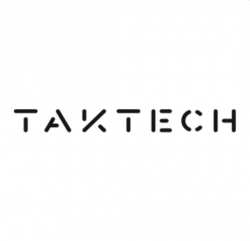 Marc Pajon
Marc PajonConsultant
TAKTECH SAS
France
The SAM (Safety and Acceptability of Driving and Self-Driving Mobility) research project: results and perspectives
 Dr Emmanuel Arnoux
Dr Emmanuel ArnouxAutomated Driving Safety & Validation Working Group co-leader
PFA
France
Regulations and consumer testing requirements in the EU for ADAS and AD and compared to the rest of the world
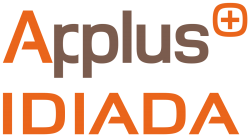 Andres Aparicio
Andres AparicioHead, ADAS and Connected and Automated Vehicles
Applus IDIADA
Spain
The deployment of ADAS in the European market is guided by legal and consumer requirements defined by local stakeholders. The General Safety Regulation defines mandatory requirements that urge for standard fitment of multiple ADAS in all new vehicles. And beyond the legal framework, Euro NCAP foresees complex safety and assisted driving systems, with a comprehensive roadmap until 2030. In parallel, other regions including China and US also have implemented specific programs and drafted very ambitious roadmaps. The presentation will review current and future requirements for ADAS applicable to the European and other international markets.
The L2+ safety stakes for engineering
 Luc Bourgeois
Luc BourgeoisPresident AD/ADAS expert community
SIA
France
High Definition sensors redundancy and complementarity for extended autonomous vehicle ODD
 Dr Benazouz Bradai
Dr Benazouz BradaiResearch & Innovation Director - Master Expert in ADAS/Autonomous Driving
Valeo
France
Omniverse and GenAI to accelerate the development and validation of ADAS
 Oussama Ben Moussa
Oussama Ben MoussaHead/CTO autonomous mobility
Capgemini
France
Mastering the complexity of automated driving in projects beyond L2 with scenario-based testing paving the way to virtual homologation
 Dr Heiko Scharke
Dr Heiko ScharkeGlobal Product Manager
AVL List GmbH
Austria
 Hannes Schneider
Hannes SchneiderLead engineer ADAS/AD scenario-based verification
AVL
Austria
The advancement of automated driving systems (ADS) beyond Level 2 autonomy presents intricate challenges that requires rigorous validation methodologies. Our presentation proposes a scenario-based testing framework that addresses the critical requirements for traceability, interoperability, and credibility in ADS development. It outlines the artefacts of a comprehensive validation toolchain, designed to ensure a robust and systematic approach to safety validation. We will consider methods and tools for identification of realistic scenarios and its statistics as an important part of the framework to ensure SOTIF conform safety and risk validation/mitigation in the given Operational Design Domain (ODD). Furthermore, we will discuss a systematic testing and validation toolchain to manage and deploy validation cases in real and virtual environments during different development and testing stages. A structured approach is crucial to master the complex testing and safety validation requirements and to proof that the residual is acceptable to operate ADS on public roads safely.
From digital vehicle to virtual twin to immersive virtual twin
 Didier Wautier
Didier WautierGeneral manager: synthesis and immersive simulation
Renault
France
The digitalization of Renault Group is not new, but it is intensifying as the company transforms itself into a 'tech company'. This is essential to keep pace with the growing technological complexity of vehicles, the ever-increasing number of technical and regulatory requirements and the continuous improvement of existing and future vehicles in a connected world. In recent years, the tools available to design and engineering have become so advanced that virtual reality has overtaken physical reality. The digital twin exists before the vehicle itself, and evolves throughout the design process, including the customer in the design loop. Depending on the stage of the project, the terms used are digital vehicles, digital twin and immersive digital twin. Their fields of application range from design and development to tuning and homologation.
Connected highways: a controlled & realistic testbed environment to validate ADAS/AD and V2X functions
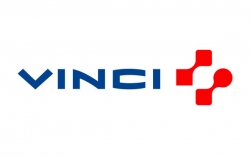 Pierre Delaigue
Pierre DelaigueDirector - connected, autonomous, electric mobility projects
Vinci
France
Summary and further discussion
 Marc Pajon
Marc PajonConsultant
TAKTECH SAS
France
Learning from real world and proving ground test & deployment, and integrated virtual testing.
Deploying autonomous vehicles – Holo's experience
 Lars Himmer
Lars HimmerCEO
Holo
Denmark
Holo is an integrator and operator of autonomous vehicles. It handles applications, training of staff, implementation and supervision of autonomous projects. Holo is currently the driving force behind the leading autonomous project in Europe: the deployment of vehicles using Mobileye’s autonomous software in the Grorud area in Oslo, Norway. The company has deployed more autonomous projects in Scandinavia than any other company. Our experience ensures safe operations that constantly push autonomous technology to its limit and systematically collect data to make improvements in customer experience, stability and autonomous performance.
What the audience will learn
- Where to launch autonomous projects
- How to navigate legislation and get permits
- How to operate autonomous vehicles
- The future structure of the industry
- Future perspectives in autonomous mobility
Agile scenario alteration: a framework to accelerate automated vehicle testing
 Nils Katzorke
Nils KatzorkeProject coordinator
Mercedes-Benz AG
Germany
With current progress in automated driving, the number of use cases for automated vehicles that can be tested on proving grounds has become substantial. The point where use cases can be tested in an individual, experimental manner has been exceeded. For economic reasons and to increase the reliability, proving ground tests need to be standardized and set up as fast and cost-effective as possible. Hence, test equipment providers and proving ground operators adopted new methods to rapidly alter test scenarios, regarding road markings, traffic infrastructure, vulnerable road users and other traffic participants. The presentations aims at establishing a connection between different methods of agile scenario alteration to showcase how they can be intertwined in a holistic framework. A crucial question in this context is, how physical test drives and digital test drives relate to each other and what potential benefits of cyber-physical test procedures are. Additionally, the presentation will discuss what crucial environmental conditions are currently not available in standardized digital or physical simulation methods. Examples from the research projects for test infrastructure development at the Mercedes-Benz Test and Technology Center in Immendingen will be provided to make the postulated ideas tangible.
Optimizing ISA experience: city data validation strategies to improve the quality of digital maps with speed limits
 René Spaan
René SpaanEU Smart Mobility project leader
City of Helmond (NL)
Netherlands
In its dedication to road safety, the City of Helmond actively participates in international projects concerning intelligent speed adaptation (ISA) to address speeding concerns, both real and perceived. ISA, recognized for preventing 20% of fatal accidents, notifies drivers of speed limits for compliance. René Spaan examines ISA readiness in medium-sized cities, emphasizing data validation for a seamless user experience. During the readiness assessment for ISA-equipped cars, Helmond observed inaccuracies in speed advice due to unvalidated digital maps lacking verified speed limits. As part of the project, a validation and feedback loop was established between the road authority and the Dutch national access point to optimize the national digital maps of speed limits, usable by third parties.
What the audience will learn
- How a city validated digital speed information
- How a city validated digital traffic sign information
- How can a city reclaim digital infrastructure control, ensuring quality data provision to service providers?
- What is the user experience of driving with a retrofitted ISA system?
- How a city can provide input to car manufacturers on ADAS-related topics
15:15 - 15:45
Break
Evolving PG for the development and validation of AD in different ODDs
 Dr Sebastian Siegl
Dr Sebastian SieglFunction verification & validation strategy responsable automated driving functions
Audi
Germany
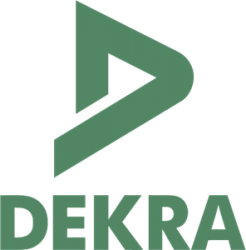 Uwe Burckhardt
Uwe BurckhardtHead of DEKRA Lausitzring
DEKRA
Germany
Autonomous driving poses a new challenge to the design of proving grounds, as autonomous driving functions evaluate with extensive sensor technology not only the road surface and driving dynamics parameters but also the environment to enable operational design domain-specific features. As a consequence, for function testing under public road conditions, the proving ground tracks and environment must reflect the conditions found on public roads in different ODDs. Another important feature is the enablement of various dynamic scenarios on the test track. Dynamic swarm-based scenarios must be executable, reproducible and safe. For this, the connectivity and communication infrastructure of the participants is needed. This presentation gives insight into the track design, infrastructure, communication and equipment requirements and also solutions for a new type of proving ground for the development and validation of autonomous driving.
What the audience will learn
- Autonomous driving and proving ground testing
- Scenario and swarm-based testing in different operational design domains
- Connectivity and infrastructure on the proving ground
The AVL prototype 'AutBus': autonomous public transportation in adverse weather
 Armin Engstle
Armin EngstleSite manager AVL Roding
AVL Software and Functions GmbH
Germany
The core of the presentation becomes apparent in the evaluation of lidar perception in adverse weather conditions respectively in different rain intensities and fog visibility ranges. The optimization of AD sensor systems in adverse weather is a prerequisite for the all-day use of autonomous vehicles in public transportation. The analysis demonstrates that the influence of fog on lidar perception is significantly higher than the influence of rain. Additionally, it seems, that small rain rates with finer raindrops might be affecting lidar beams more than higher rain rates with thicker drops.
What the audience will learn
- Why adverse weather is considered to be one part of the 'long tail' of autonomous vehicle perception
- How sensor perception (lidar, camera, ultrasonic, night vision) can be tested in weather in a structured way
- How lidar perception is affected by fog and rain
State of the art scenario based testing and simulation
When ODD meets OpenSCENARIO 2.0 – safety-driven validation
 Gil Amid
Gil AmidChief regulatory affairs officer
Foretellix
Israel
The presentation modeling of ODD ( operational design domain) in ASAM OpenSCENARIO® DSL 2.0, and incorporating it into safety-driven validation. The presentation demonstrates the interaction between scenarios and ODD during virtual testing. Special Attention will be given to the challenges of modeling ODDs and validating correct behavior of the ADS within an ODD.
What the audience will learn
- How to model an ODD using ASAM OpenSCENARIO 2.0
- How to simulate and validate ADS/AV and incorporate ODDs into the simulation
- How to produce coverage metrics on ODDs
Enabling Virtual Test & Validation – Self-Sovereign Identity via OIDC to enable Decentralized Open Data Markets
 Carlo van Driesten
Carlo van DriestenSystems architect for virtual test and validation
BMW Group
Germany
The goal of a virtually enhanced homologation process through the usage of driving simulators relies on the quality of the data used as input for the simulation. If HD Maps, driver models, scenarios, or sensor models, the integration of such elements in various systems throughout deep supply chains demand a common understanding brought by standards like e.g., OpenDRIVE from the ASAM e.V. OpenX. BMW explores the possibility to create an open and decentralized data ecosystem (ODDE) to increase the availability of standardized simulation data. The European research family GaiaX with the help of DLT technologies, self-sovereign identities and zero-knowledge proofs for selective privacy and scaling in open networks serve here as the technological baseline. We show the current state of the ODDE realized in the ENVITED (ENvironment for VIrtual TEst Drive) research cluster at the Automotive Solution Center for Simulation e.V.
What the audience will learn
- ASAM OpenX provide a common understanding for simulation data.
- Integration of common rules in validation processes to determine the quality of this data.
- Annotating data with meta information enables data offerings and searchability.
- New technologies need to be leveraged to create truly decentralized data markets.
- An Open ID Connect Bridge and most recent research is shown to leverage SSI as Single Sign On solution for ecosystem applications
How to maneuver in the stakeholder landscape when verifying and validating highly automated driving systems
 Dr Majid K Vakilzadeh
Dr Majid K VakilzadehAD V&V system architect
Zenseact
Sweden
One of the greatest challenges on the road to full deployment is proving that Autonomous Driving technology positively impacts traffic safety. To support such a claim with statistical evidence, an enormous number of kilometers of driving is required, widely accepted to be unfeasible. Zenseact’s approach to safety evaluation is developed around three pillars. First, adopting a truly redundant design strategy in different parts of our AD solution. Second, to scale up the quantity of data from in field operations through dynamically probing data from a large customer fleet. Third, using state of the art simulation environment to stress test traffic scenarios required to excel in from a societal perspective.
Zenseact aims to accelerate the transition toward zero collisions through faster development, verification and validation and deployment of safety-critical features. By collecting road data and analyzing safety related information, we direct the development efforts to maximize safety and comfort.
What the audience will learn
- What constitutes a safe automated driving system
- How to measure launch readiness more quickly
- The role of best practices in the safety assurance of automated driving systems
- Aggregated safety measures versus event-based safety criteria
- How to increase the rate of ODD expansion and functional growth
Method development of test track testing of a head on scenario
 Carina Björnsson
Carina BjörnssonTechnical expert, driver assistance and active safety test methods
Volvo Car Corporation
Sweden
Head on collisions are high speed collisions and these mostly cause severe injuries of the persons in the vehicle. The speed at the impact is inevitably the sum of the two oncoming vehicle speeds. Volvo Cars decided to investigate how to address these types of accidents with our active safety function collision mitigation by braking. The aim is to primarily mitigate the injuries by reducing the speed at the impact, and not to have full avoidance in all cases. As the function is developed, the question on how to test it was raised. This presentation describes the development of the test methods for testing of such a function. A function that focus on high speeds and interact at a timing of very low time to collision.
Power to the people: democratizing safety for automated driving
 Dr Siddartha Khastgir
Dr Siddartha KhastgirHead of Verification & Validation, Intelligent Vehicles
WMG, University of Warwick
UK
 Hamid Serry
Hamid SerryAutonomous vehicle engineer
WMG, University of Warwick
UK
Simulation-based critical scenario identification and analysis for automated driving
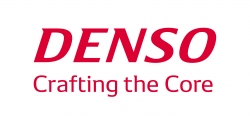 Adam Molin
Adam MolinTechnical manager
Denso Automotive Deutschland GmbH
Germany
Verification and validation processes play a vital role in ensuring the safety and reliability of autonomous vehicles. Scenario-based testing has emerged as an effective approach for identifying critical scenarios that challenge the capabilities of automated driving systems. This presentation aims to explore the usage of scenario-based testing to automatically identify critical factors by data analysis within a simulation. Built on experience from various R&D projects, the presentation will share best practices and insights for critical scenario identification to maximize efficiency and coverage.
What the audience will learn
- A general framework for critical scenario identification using simulation
- Best practices of using scenario-based testing to identify critical factors for automated driving safety
- Guidelines on different scenario description formats and optimization methods and their impact on critical scenario identification
Real-world accident scenario simulation
 Thomas Unger
Thomas UngerHead of data analysis and simulation
Verkehrsunfallforschung an der TU Dresden GmbH
Germany
The GIDAS (German In-Depth Accident Study) database contains detailed information about accidents and the GIDAS Pre-Crash Matrix (GIDAS-PCM) offers the possibility to observe the pre-crash phase.
The GIDAS-PCM contains all relevant data to simulate the pre-crash phase. This includes the characteristics of the participants, the dynamic behavior of the participants as a time-dependent course as well as the geometry of the traffic infrastructure. The paper shows the conversion progress of GIDAS data in OpenDrive and OpenScenario. A detailed investigation of active safety systems in real accident situations has been made feasible and the importance of simulating real-world accidents is shown.
What the audience will learn
- Contents of GIDAS
- Contents of GIDAS-PCM
- Availability of real-world accident scenarios
- Possibilities for evaluations
- Conversion process into several formats (PCM, OpenDrive, OpenScenario)
Measuring the quality of a scenario database
 Sytze Kalisvaart
Sytze KalisvaartSenior project manager
TNO
Netherlands
Many companies have created scenario databases. One question remains open: what is a good scenario database? Based on work with Torc Robotics, Project SunRISE and Hi-Drive, TNO will present approaches and metrics including metrics for identifying missing scenario categories, assessing scenario coverage related to specific environments or operational design domains (ODDs), determining the most common sequences or combinations of scenario categories and comparing data sets across years. Examples will illustrate enriching the database with accidentology and edge cases. These metrics are essential for providing enough confidence in utilizing scenario databases to specify an ODD or test automated driving.
What the audience will learn
- What methods can be used to analyze the quality of a scenario database?
- What quality metrics exist for scenario databases?
- How to deal with edge cases in scenario databases?
Rapid SW and HW prototyping for automated driving: sensor and function benchmarking with JUPITER platform
 Dr Clara Marina Martinez
Dr Clara Marina MartinezEngineer - ADAS virtual development
Porsche Engineering Services
Germany
The race to release next-generation ADAS is slow and expensive. Complex ADAS functions are developed using theoretical sensor specifications and can only be tested in late project stages. In Porsche Engineering we have accelerated the time to vehicle testing of our ADAS algorithms by means of our JUPITER vehicles.
JUPITER is a fully scalable rapid prototyping platform for ADAS that allows for early close-to-series testing. It integrates state-of-the-art ADAS algorithms, is equipped with high-performance ASIL-D Middleware and scalable data exchange, and is interoperable and real-time capable. We will present the sensor benchmark use case as a teaser of the plethora of possibilities that JUPITER offers.
What the audience will learn
- JUPITER as fully scalable rapid prototyping platform for ADAS development
- Sensor benchmarking in an adaptable platform.
- International collaboration platform for ADAS.
From Road to Simulation in a Nutshell
 Thomas Mauthner
Thomas MauthnerProgram manager
AVL
Austria
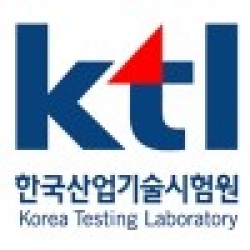 Hong-Seok Lee
Hong-Seok LeeSenior Researcher
Korea Testing Laboratory (KTL)
Korea
 Christian Gutenkunst
Christian GutenkunstSolution Manager
AVL Deutschland GmbH
Germany
Overwhelmed with the coverage of your Operational Design Domain? How can you guarantee the completeness and reliability of your ODD parameterization? AVLs approach from Road-to-Simulation allows getting a better understanding of your underlying data. Our solution supports you from real-world data collection to data processing until evaluation and analysis. Such concrete scenarios are mapped to logical scenarios and parameterized by captured real-world data. These resulting scenarios are used to execute simulation test plans. Based on these results, the following next steps can be taken: identify gaps in the current implementation, gaps in the current ODD definition, and missing real-world data. Our customer Korea Testing Laboratory operates the complete toolchain mentioned above and will give insights for data collection, analytics, scenario extraction, digitalization, and scenario re-simulation.
What the audience will learn
- AVL's Road-to-Simulation method aids in understanding and refining Operational Design Domain (ODD) by transitioning from real-world data collection to simulation.
- It involves mapping concrete scenarios to logical ones, parameterizing them with real-world data, and executing simulation test plans.
- The process allows identification of gaps in implementation, ODD definition, and missing real-world data for iterative improvement.
Navigate toward the next generation of automated driving and software-defined vehicles
 Olivier Sappin
Olivier SappinCATIA CEO
Dassault Systèmes
France
In the constantly evolving industry ecosystem toward the software-defined vehicle, the development of advanced driver assistance systems (ADAS) and automated driving (AD) are at the forefront, promising enhanced safety and a better driving experience. However, the sheer complexity of these technologies requires a paradigm shift in the development strategy to ensure success. This presentation will explore innovative methods based on model-based systems engineering, massive simulation and digital certification scenarios correlated with real on-track results for the delivery of safe and efficient highly automated technology. Key industrial projects with automotive car makers will illustrate the usage of these methods and software solutions.
What the audience will learn
- Why systems of systems and systems architecture based on MBSE are enablers in defining software-defined vehicles
- The business value of massive simulation to support key standards and regulations like ISO 26262, ISO 21434 and UNECE WP.29 R156
- How the combination of software solutions with homologation organization is key for digital certification scenarios
- The usage of the AD/ADAS simulation toolchain to accelerate test and validation of ML algorithms, sensors, perception stacks, systems and vehicles
Panel discussion - Using scenarios and ODDs together to best achieve state of the art safety.
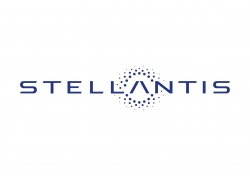 Vincent Abadie
Vincent AbadieSenior Fellow ADAS and Autonomous Driving
Stellantis
France
 Dr Andreas Richter
Dr Andreas RichterEngineering Program Manager - Operational Design Domains
Volkswagen Commercial Vehicles
Germany
 Carlo van Driesten
Carlo van DriestenSystems architect for virtual test and validation
BMW Group
Germany
 Hakim Mohellebi
Hakim MohellebiExpert, engineering simulation functional architecture
Renault
France
 Marc Pajon
Marc PajonConsultant
TAKTECH SAS
FRANCE

